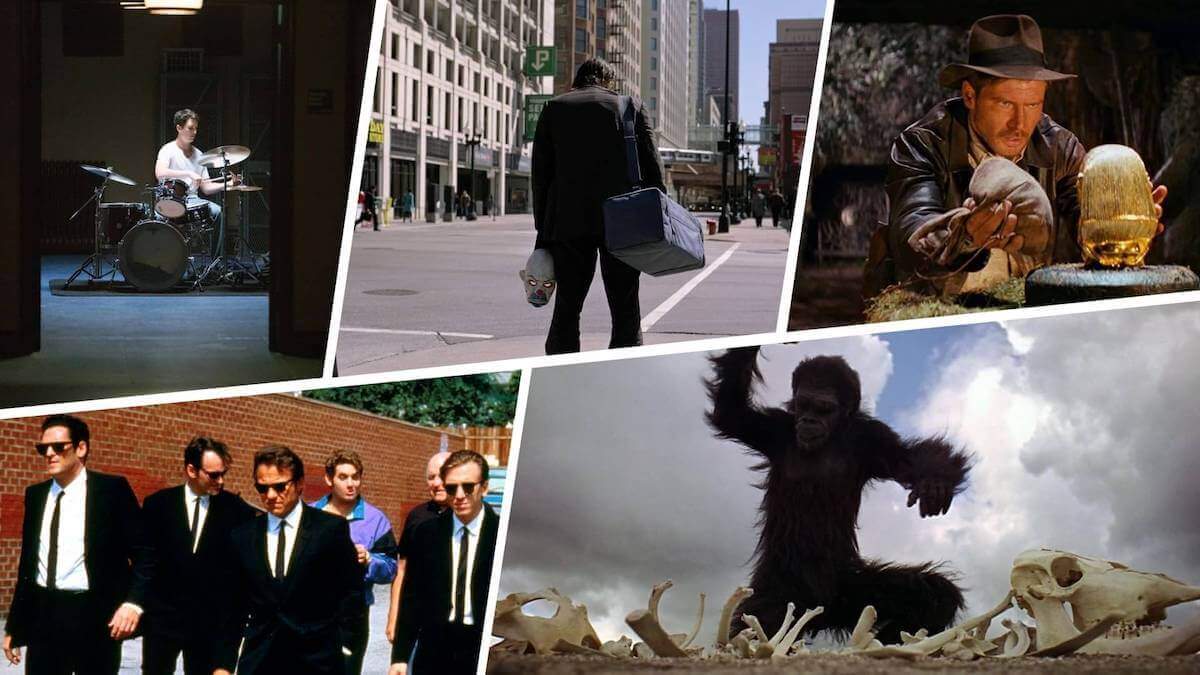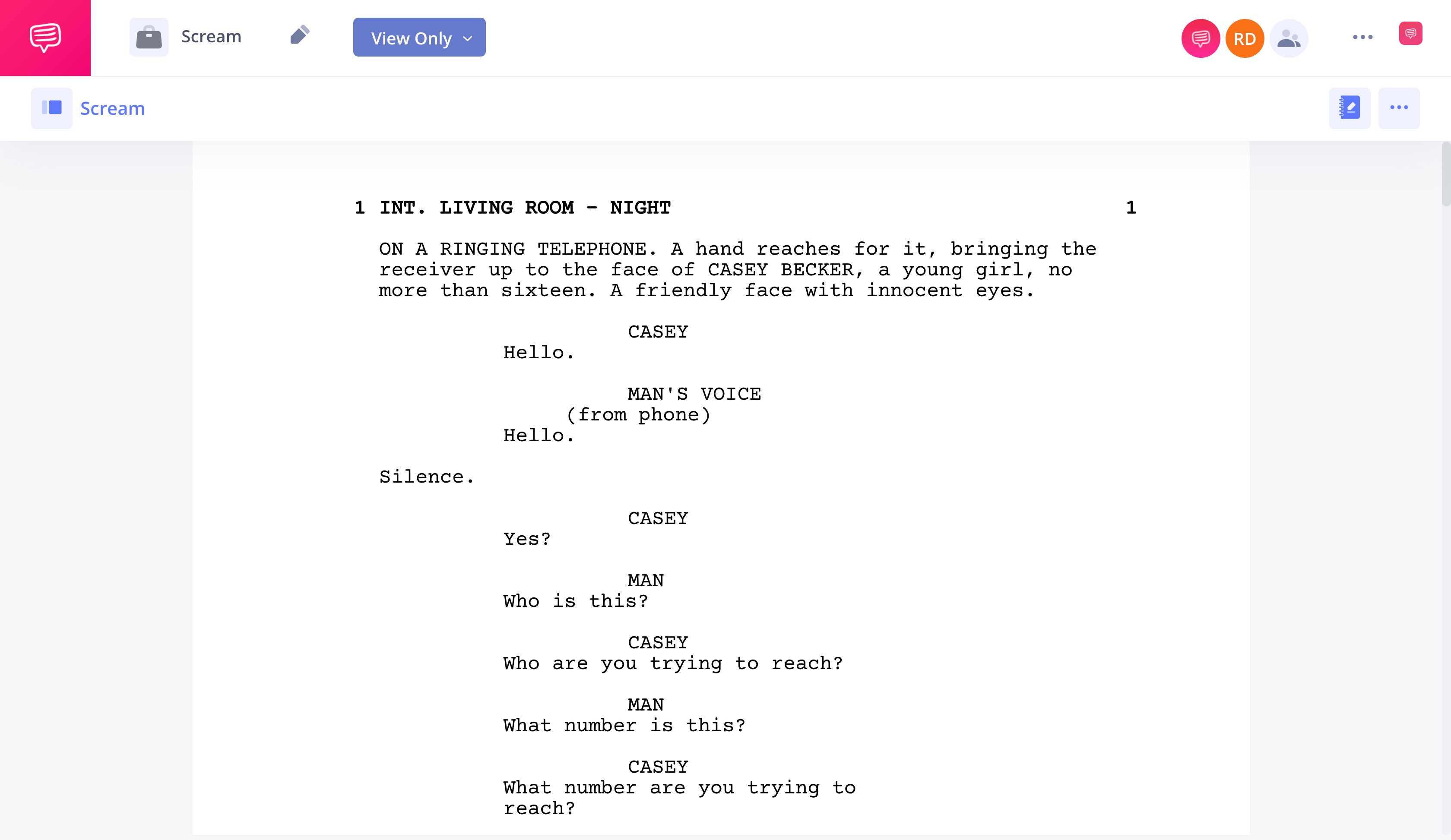The first scene in a story is arguably the most important one. You need to give the audience a sense of what’s going to happen as well as set the tone. After all, you don’t want your comedy to start off with a grim, overly dramatic scene. This is where a prologue can come in handy. So what is a prologue and how can you make one that works for your narrative? That’s what we’ll dive into today.
WHAT DOES PROLOGUE MEAN?
What’s a Prologue?
You likely know that a prologue in a book or film comes at the beginning of the story. It’s the first scene and our first introduction into this world and its characters. However, not every first scene constitutes a prologue. It goes much deeper than that.
PROLOGUE DEFINITION
What is a Prologue?
A prologue is an introductory scene that introduces the audience to a story, its characters, the tone, and/or pertinent themes. This scene should be able to stand on its own, and it should function as its own separate story with a beginning, middle, and end.
Prologues can take different forms. They can consist of a screen of text that informs the audience of the movie’s world, such as in Star Wars and The Terminator. Or it could be a short scene, usually no longer than a few pages, that draws the audience in and gets them excited for the story about to come.
Essential Characteristics for a Good Prologue:
- Stands on its own
- Sets up what the film will be about
- Reflects the essence of the movie
- Exists outside of the main story
- Creates intrigue
PROLOGUE DEFINITION AND EXAMPLES
Best Prologue Examples
Now that we have a better understanding of what a prologue is versus other ways to begin a work, let’s examine some great prologue examples.
Raiders of the Lost Ark
Might as well start with a prologue in one of the best action movies ever made - the opening scene of Raiders of the Lost Ark.
The opening sequence lasts for 10 minutes, a significant portion of the film. And the interesting thing is that it has nothing to do with the plot of finding the Ark of the Covenant. Indiana Jones is after a completely different artifact we never see again, but the prologue accomplishes several things at once.
If the prologue wasn’t there, the plot would be the same, but the tone would be off. The first scene would be Jones in the classroom being offered the expedition to locate the Ark. It’s a good scene, but it would be a boring way to open an adventure film. The audience wouldn’t know what the film is really going to be, and they would have a poorer understanding of Indiana Jones.
The Dark Knight
The Dark Knight also uses a prologue, but for a different purpose. Batman isn’t present at all within the first five minutes of the film. While this may seem odd, it works perfectly because instead, we get an exciting action sequence that introduces us to the movie’s villain: Joker.
During the bank robbery, the other criminals talk about Joker, such as how he wears clown makeup. We also learn that Joker, who set up the heist, ordered his men to kill off one another as they each completed their job. We learn how intelligent, conniving, and deadly this new villain is, so we understand precisely what Batman is up against.
The prologue alone shows why Heath Ledger is one of the best actors to portray the Joker in film and TV history.
Romeo and Juliet
Prologues have been a common fixture in literature for centuries. The famous Romeo and Juliet prologue clues us into the death that’s to follow with the lines:
From forth the fatal loins of these two foes
A pair of star-cross'd lovers take their life;
Whose misadventured piteous overthrows
Do with their death bury their parents' strife.
Shakespeare understood the importance of prologues as evidenced from this quote from another one of his works - The Tempest. The character Antonio states, “What’s past is prologue.” The quotation essentially means history provides context for our present. In relation to stories, prologues provide context for what we’re about to witness.
The Canterbury Tales
Likewise, The Canterbury Tales prologue sets up the scene and the framing device the novel will use. It makes us aware of the time, place, and season we’re in as well as why this group of disparate people are traveling together.
Some stories really benefit from a prologue. However, prologues can also be done poorly. You only have a few minutes to grab viewers’ attention, so if you jam in a prologue that shouldn’t be there, then you could lose your audience before your story really gets started.
Related Posts
DEFINE PROLOGUE
How to write a good prologue
There are some screenwriters out there who abhor prologues. They think you just need to get started on your story without any fluff. As is the case with most writing tools, prologues are really neither good nor bad. It all comes down to how you use it, so if you want to include a prologue, then you better make sure it’s there for a reason. Here are some basic guidelines to follow.
1 . Give Your Prologue a Beginning, Middle, and End
Your prologue should essentially function as its own short story except instead of resolving everything, you leave the ending open so that the audience wants to see more.
You have a fairly well-done short film just in the first five minutes of Scream. Take a look at the scene on the page, which we imported into StudioBinder’s screenwriting software.
Scream Script • Read Scream Prologue Example
Related Posts
The scene begins with a mysterious phone call. It builds in tension as Drew Barrymore’s character becomes more and more suspicious. And it ends with her death and our introduction to the villain.
The scene works on its own separate from the rest of the movie, but we still want to see more. We want to know who the killer is and who he’ll go after next.
2. Set Up the Tone of Your Film
If you’re writing a horror, then you want the first scene to be scary. If you’re making a comedy, then the first scene should be hilarious. While your prologue may be separate from the rest of the narrative, it should abide by the same tone so that you don’t give your audience whiplash from varying sensibilities.
3. Make Your Theme Known
Every story has a theme. And your prologue should set up precisely what this theme is going to be. It helps make your piece’s introduction stand out and have relevance to the rest of the story.
You don’t need to have a character look at the camera and explicitly announce the theme either. You can accomplish this with little to no dialogue, which is the case for the prologue of 2001: A Space Odyssey.
The prologue shows man’s early ancestors discovering tools. It plays into themes expanded upon later in the film about how mankind evolves and uses technology.
The theme is clear and ties into the rest of the story. If you do all three of these, then you have yourself a solid prologue that makes sense in the context of your narrative.
Related Posts
UP NEXT
Writing exposition in film
Writing exposition is one of the hardest things screenwriters have to do. When done well, the audience won’t even realize you’ve taught them more about this world. When done poorly, the audience rolls their eyes at how heavy-handed it was. Whether it’s in the prologue or not, there are numerous tips you can learn to better incorporate exposition into your next film.

